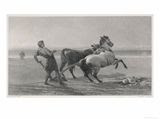The website even includes a special section for preschoolers,Paz Place:

"Discovery is More than the name of our Company...
it is our Very Calling."

Using the Index of Learning Styles paradigm that was developed by Richard M. Feldman and Barbara A. Soloman as a comparative tool, we see the Discovery Kids site is designed to keep the primary focus on the visual and active styles of learning, although the site does incorporate both verbal and reflective styles, as well. Another interesting aspect of this site is the very minimalist use of text on the home page, which demonstrates the attractiveness of an active, global approach to learning for young children. Even though I no longer fit in this age group, I found the site to be interesting and fun, with strong visual design effects and a primally appealing use of color.
This site is designed using a pedagogical, or teaching style of instruction that provides both a sequential and global learning approach through the use of interactive links. The icons help the viewer by encouraging an intuitive approach to access new features and helps to develop insight through the use of these connections. The links are in the form of hover bubbles, and they rotate as the viewer moves through the site. Each time the viewer hovers over a link, they are given a choice of continuing to an outside commercial site or returning to the official Discovery site. If the child selects one of these options, they are directed to a warning page that tells them they are leaving the official Discovery Kids site:
(SEE WARNING)>>

The site contains primarily visual content, but there is audio content available as well, and although visual or hearing impaired children would miss a large amount of the content on the site, it is possible for them to see or listen to the accessible portions of the site. On the lower third of the page are links to authorized Discovery Kids videos and cartoons, including BEYOND: All about Bindi, an adventure series of a child naturalist, that is presented to the audience through video and game links, and using the English language on the home page.The site also features scientific education on a page titled "The Yuckiest Site on the Internet."
(Video illustrating visual format of Discovery Kids)
The overall corporate image of the site translates as making learning fun and adventurous, an overall positive experience for children.
Second Site - Maverick Adventures
Using a template developed by Jennifer Turns and Tracey S. Wagner in their publication, Characterizing Audience for Informational Web Site Design" By: Turns, Jennifer; Wagner, Tracey S.. Technical Communication, Feb 2004, Vol. 51 Issue 1, wherin they identified the principal characteristics of successful websites in terms of Role, Goal, Knowledge, Human Factors, Circumstances of Use, and Culture, the second site I have chosen for comparison is Maverick Adventures, a website devoted to an audience of "active, luxury travel for adults aged 25 to 55."
(Maverick Adventures Home page and destination image)
In contrast to the Discovery Kids website, the Maverick Adventures site engages the adult learner through the promotion of a reflective, sensing learning style and gives the viewer a location where adults can find articles, tips and travel advice.
The site lets the viewer sort through the facts via tabbed browsing, in a sequential fashion, using both visual and verbal information to help inform their choices. The website gives us information that tells us that, in addition to serving as a travel guide for the active adventurer, the company also serves as a social and networking site, as seen by their motto:"To create innovative, life-changing travel experiences that form new social bonds and amazing friendships."
Maverick Adventures advertises their services as providing access to the "coolest" sites and giving the traveler "destination expertise" but does not list the specific qualifications of their tour guides or travel agents. Maverick states that the company promotes and is devoted to active adventuring, therefore excluding adults who are physically handicapped or otherwise unable to keep pace with the other members of the groups.
The overall design of the site is harmonious, with warm blends of earth, sea and sky tones, a perfect choice for a travel site. The visual images are well-chosen and give balance and movement to the site.

In terms of culture, Maverick Adventures is geared towards the modern urban professional who wish to have an "active, adventurous, social and refined travel experience." As someone who nominally fits the criteria for a Maverick adventurer, the overall corporate message of the site serves to provide a surface visual and verbal appeal. However, there is cause for dissatisfaction by the targeted audience due to the lack of specific details on the site. The exclusiveness angle that limits the audience to certain criteria may appeal to some members of that group, but may be found to be unappealing to others.




No comments:
Post a Comment